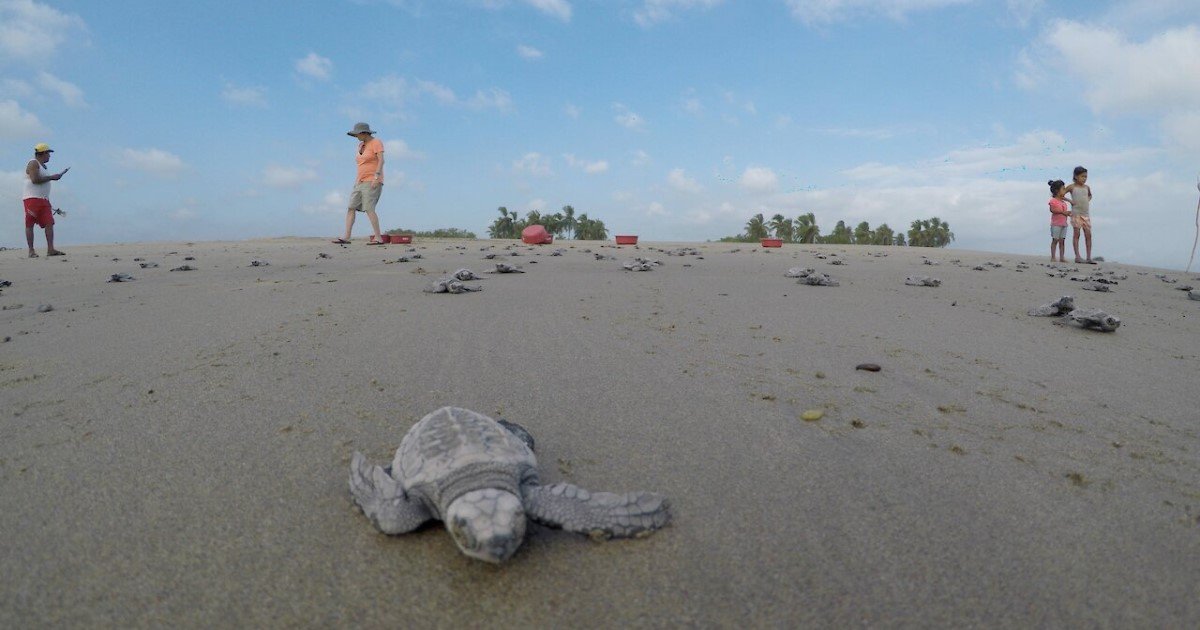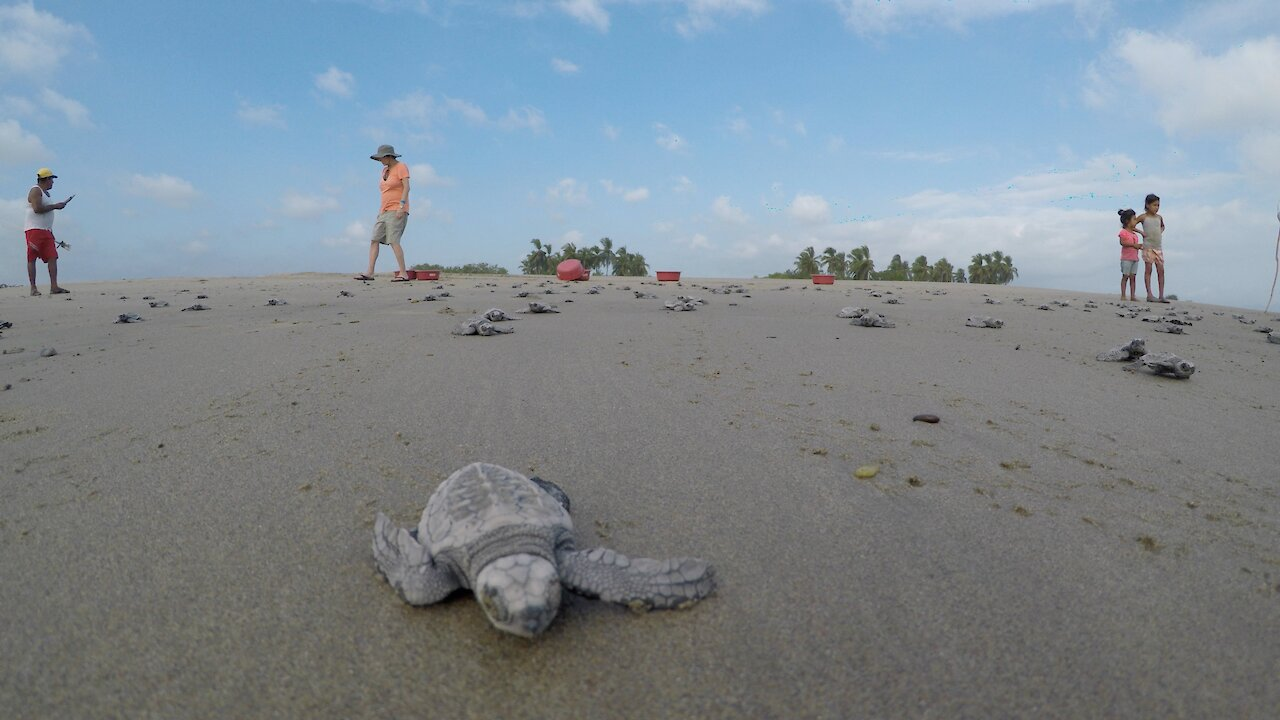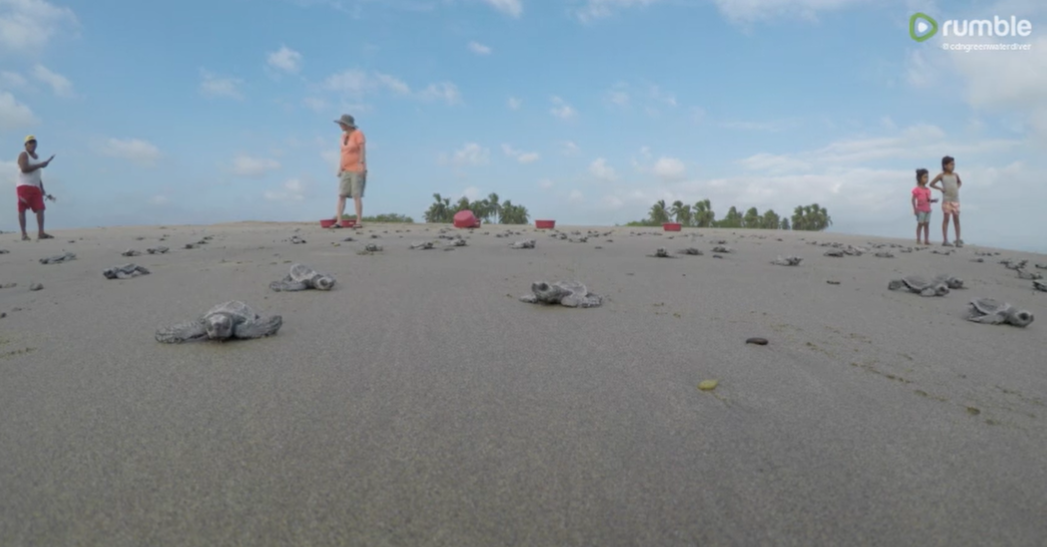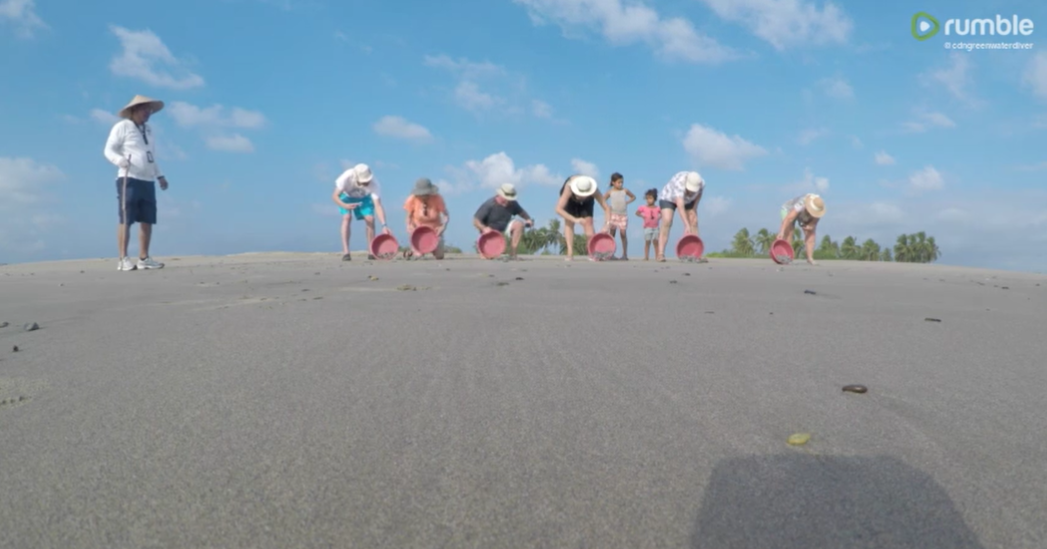Ixtapa and Zihuantanejo are two cities situated 150 miles out of the city of Acapulco on the Pacific coast of Mexico.
These are actually two different cities but are often referred to as one city, known as Zihua, by the locals.
A tourist Brent and his wife Elsa spent some time in Zihua as a leisure trip. During their visit, they did something amazing for the turtles in the region.
Watch the baby turtles in the video below!
[rumble video_id=v5ze9x domain_id=u7nb2]
Video credit: Rumble
They joined a local private turtle release project and helped the turtle eggs hatch before releasing them to the Pacific.
The turtle camp Brent and his wife joined is functional on the Petatillo beach, operated by Felix and his wife Dona Chucha. Felix’s initiative is 16 years old but has never received any recognition or support from the Mexican government.
However, for the last two years, tourists have been visiting Felix and helping him in his efforts to increase the population of the Golfina turtles in the area.
Brent contacted Eco Ixzi Travel, Zihua to arrange the excursion for them. The company provided them with Julio Lopez as their tour guide who is a very learned man about the Mexican state of Guerrero.
The tourists were led to the turtle camp where Felix and his wife live with ultimate simplicity. They were briefed about the project under a temporary shelter.
Felix also told the tourists his routine. Every evening, Felix rides his ATV to look for the turtle nests where the turtles have just laid eggs.
He goes as far as 3 miles in either direction of the camp to find as many turtle nests as he can. He then unearths the fresh eggs buried by the turtles in the sand and brings them to the camp for safekeeping.
Felix then notes the date and time of every nest and places the eggs separately within the compound of the camp, away from the reach of poachers and predators.
It takes an egg 45 days to bring a cute little turtle to this world.
On the day of hatching, the tourists who are at the site are allowed to help the little creatures get out of their birthplaces covered with sand.
To take the newborn turtles out, tourists are provided with latex gloves. Wearing the gloves, the tourists unearth the site, stroke by stroke gently revealing the turtles who have just come to being.
The final moment when the baby turtle crawls out of the sand bed is really satisfying for these people.
Brent and Elsa gently took the last baby out of the sand bed and placed them all in a small plastic tub filled with water and sand.
It takes around half-hour for the turtles to be able to respond to the surroundings and notice the whereabouts of their hatching. They’ll return to the same place in 10 years to lay eggs – the female ones obviously.
After the baby turtles are ready for the external world, the group of tourists takes them out to the beach where they are released at a count of three.
This little “turtle race” is a very adorable thing as the turtles move out slowly and race towards their natural habitat, the ocean. Some go straight to the ocean as if they’d been doing that for ages while some need a little helping hand to kickstart their life.
An estimated 10 per cent of the hatched turtles come back to the same spot to lay eggs.
The main predators for these little guys are birds, that’s why Felix’s turtle camp releases them at night or in the evening when the birds are in their nests. Large fish also feed on them.
Releasing every turtle, Felix hopes a two-foot-long 100 pounds mature turtle will come back to visit him. For the tourists, this is simply something they’ll never forget.
Replaced!





